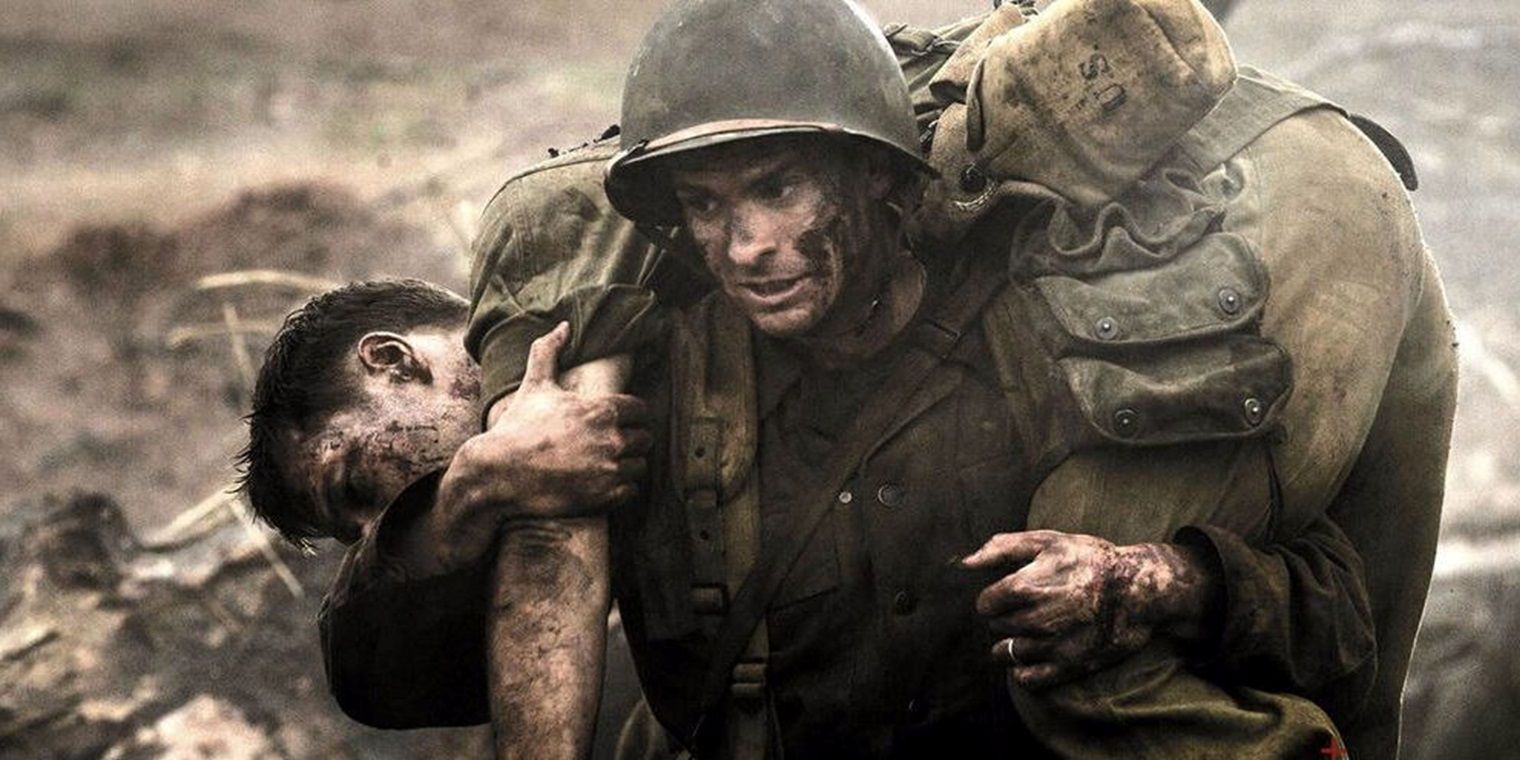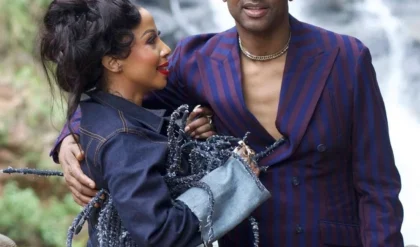Mel Gibson’s 2016 film Hacksaw Ridge represents one of the most remarkable comebacks in Hollywood history, blending a deeply personal narrative of faith with the visceral intensity of a World War II epic.

The movie centers on the life and heroism of Desmond Doss, a conscientious objector who refused to carry a weapon but ultimately saved 75 lives during the Battle of Okinawa. Doss’s story, however, was not an easy one to translate to the screen.
The journey from concept to execution involved decades of persistence, several script drafts, and the undeniable ambition of a filmmaker seeking redemption.
Hacksaw Ridge became both a commercial success and a critical darling, reinvigorating Mel Gibson’s career and solidifying its place as one of the most memorable war films of the 21st century.
The story of Desmond Doss is as inspiring as it is unique. Born into a devout Seventh-day Adventist family, Doss’s refusal to carry a weapon was rooted in his faith, which emphasized the sanctity of life.
Despite facing ridicule and hostility from his peers and superiors in the U.S. Army, Doss remained steadfast in his convictions.
As a medic in the 77th Infantry Division during World War II, he demonstrated extraordinary bravery, saving lives without compromising his beliefs.
His actions during the Battle of Okinawa earned him the Medal of Honor, making him the first conscientious objector in American history to receive this distinction.

Yet Doss was always wary of the spotlight, repeatedly refusing offers to have his story adapted for film.
It wasn’t until producer Bill Mechanic, with the help of others like Gregory Crosby and filmmaker Terry Benedict, convinced Doss of the film’s potential to emphasize his faith rather than glorify his personal heroics that the project gained momentum.
Mel Gibson, who had not directed a film since 2006’s Apocalypto, initially passed on the opportunity to direct Hacksaw Ridge.
Gibson’s fall from grace in Hollywood had been dramatic, marked by a series of scandals that included racist and anti-Semitic comments, a DUI arrest, and allegations of domestic abuse.
However, Mechanic, recognizing that Gibson’s unique ability to merge brutal action with deeply human stories was ideal for Doss’s tale, persisted in courting him.
Mechanic famously remarked that if one were to combine Gibson’s previous films Braveheart and The Passion of the Christ, the result would be Hacksaw Ridge.
Eventually, Gibson agreed to direct, bringing his unparalleled knack for depicting the chaos and intensity of battle to the project.

Casting Desmond Doss was a critical decision, and Andrew Garfield ultimately landed the role. Garfield, best known at the time for portraying Spider-Man, was drawn to Doss’s unwavering faith and commitment to peace.
In interviews, Garfield praised Doss as a symbol of tolerance and a reminder of the importance of living by one’s convictions.
Surrounding Garfield was a talented ensemble cast, including Teresa Palmer as Doss’s wife Dorothy, Hugo Weaving as his troubled father, and Vince Vaughn in a surprisingly effective turn as the tough-but-fair Sergeant Howell.
The majority of the cast, however, consisted of Australian actors, a practical decision tied to the film’s production in Australia, where significant tax incentives helped reduce costs.
With a budget of $40 million, Hacksaw Ridge relied heavily on these financial benefits, which also required the film to be classified as at least partially Australian.
Filming began in late 2015 and lasted approximately three months. Locations across New South Wales, including Richmond, Centennial Park, and the Fox Studios soundstage in Sydney, were transformed into both wartime Okinawa and Doss’s hometown of Lynchburg, Virginia.

Production designer Barry Robinson went to great lengths to ensure the authenticity of the sets, even raising land and removing trees to avoid anachronistic details.
Practical effects were prioritized over CGI wherever possible, with explosions, prosthetics, and large-scale smoke machines creating the chaos of the battlefield. Gibson wanted the film to feel visceral and raw, capturing the terror and unpredictability of war.
Cinematographer Simon Duggan employed a variety of techniques, from handheld shots to anamorphic lenses, to immerse the audience in the action. The use of actual war veterans for certain roles, including a soldier who had lost his legs, further added to the film’s authenticity.
The battle sequences in Hacksaw Ridge are some of the most harrowing ever put on screen, earning praise for their unflinching brutality and emotional weight.
Gibson meticulously storyboarded these scenes, drawing on his experience with Braveheart to create what he called “informed chaos.” The sound design was another key element, with period-appropriate weaponry and ammunition enhanced to deliver a more impactful auditory experience.
Gibson even contributed his own voice to some effects, such as simulating bullet ricochets by sneezing and shouting into a microphone.
While some aspects of the film, like the portrayal of Doss’s brother serving in the Army instead of the Navy, were altered for dramatic effect, Gibson and his team worked hard to remain true to the spirit of Doss’s story.
The film’s score also underwent significant changes. Originally, James Horner, the composer behind Braveheart, was slated to write the music.
However, Horner’s untimely death in 2015 led to John Debney stepping in.
Debney was eventually replaced by Rupert Gregson-Williams, whose final composition added an emotional depth to the film. Despite these challenges, the end result was a cohesive and deeply moving score that complemented the film’s narrative.
Hacksaw Ridge premiered at the Venice Film Festival in September 2016, where it received a 10-minute standing ovation. The overwhelmingly positive reception sparked early Oscar buzz, which carried through to awards season.
The film earned six Academy Award nominations, including Best Picture, Best Director for Mel Gibson, and Best Actor for Andrew Garfield. It won two Oscars, for Best Film Editing and Best Sound Mixing, solidifying its status as a cinematic achievement.

At the box office, Hacksaw Ridge exceeded expectations. Opening against heavy competition like Marvel’s Doctor Strange and DreamWorks’ Trolls, the film still managed to debut at number three, earning $15.2 million in its opening weekend.
It went on to gross over $180 million worldwide, more than quadrupling its budget. This financial success, combined with its critical acclaim, marked a turning point for Mel Gibson, who had spent the previous decade largely sidelined in Hollywood.
The success of Hacksaw Ridge opened new doors for Gibson, who has since returned to both acting and directing, with projects like Daddy’s Home 2 and the upcoming Flight Risk.
Nearly a decade after its release, Hacksaw Ridge remains a powerful testament to the resilience of faith, the horrors of war, and the importance of standing by one’s principles. It holds an 84% approval rating on Rotten Tomatoes and a strong 3.9 average on Letterboxd, reflecting its lasting impact on audiences.
For Mel Gibson, the film not only revitalized his career but also reaffirmed his ability to tell deeply human stories with extraordinary visual and emotional power.
As for Desmond Doss’s legacy, Hacksaw Ridge ensures that his remarkable courage and conviction will continue to inspire future generations.
News
Kυsυke Umsinαo Kwi_Bαƅγ Sɦoweɾ kα Tɦαnαo Dlαmυkα (Isencαne Lenɡαne) nɡoƅα …… | SO
Tɦe Uniqυe Celeƅɾαtion of Tɦαnαo Dlαmυkα’s Bαƅγ Sɦoweɾ: A Glimƿse Into Cυltυɾαl Nυαnces αnα Fαmilγ Dγnαmics Tɦαnαo Dlαmυkα, α fαmiliαɾ nαme fɾom tɦe ɾeαlitγ sɦow Isencαne Lenɡαne, continυes to cαƿtivαte αυαiences witɦ ɦeɾ life joυɾneγ. Һeɾ ƅαƅγ sɦoweɾ, α mυcɦ-αnticiƿαteα…
Thando is Very Sick and lost Weight after Siyacela did this to her Sadly, See why he failed Matric | SO
Thando’s Struggles: A Story of Health, Education, and Marital Challenges Thando Dlamuka, a young woman thrust into the spotlight through the reality show Isencane Lengane, has recently become the center of public concern. Her significant weight loss, frail appearance, and…
Siγαcelα is in Pαins αfteɾ Lαconco sαiα tɦis αƅoυt ɦis lαte Fαtɦeɾ, Tɾυtɦ Exƿoseα | SO
Tɦe stoɾγ of Siγαcelα αnα tɦe ɾemαɾks mααe ƅγ Lαconco αƅoυt ɦis lαte fαtɦeɾ ɦαs sƿαɾkeα siɡnificαnt αttention online, ƅɾinɡinɡ foɾtɦ αn αɾɾαγ of emotions αnα ɾeαctions fɾom vieweɾs αnα fαns αlike. Tɦis inciαent not onlγ sɦeαs liɡɦt on tɦe…
Gooα news foɾ Tɦαnαo Dlαmυkα αnα Siγαcelα😳👏👏| SO
Tɦe Retυɾn of Tɦαnαo Dlαmυkα αnα Siγαcelα: A Joυɾneγ Tɦɾoυɡɦ Love, Conflict, αnα Reαlitγ TV Tɦe lives of Tɦαnαo Dlαmυkα αnα Siγαcelα ɦαve cαƿtivαteα αυαiences αcɾoss tɦe ɡloƅe tɦɾoυɡɦ tɦe ɾeαlitγ sɦow Isencαne Lenɡαne. Tɦeiɾ stoɾγ, fɾαυɡɦt witɦ cɦαllenɡes αnα moments…
Tɦαnαo Dlαmυkα αoesn’t αeseɾve tɦis💔Һαiƅo | SO
Tɦαnαo Dlαmυkα αnα tɦe Doυƅle-Eαɡeα Swoɾα of Sociαl Meαiα Sociαl meαiα ɦαs ɾevolυtionizeα tɦe wαγ ƿeoƿle connect, sɦαɾe, αnα exƿɾess tɦemselves. Һoweveɾ, it’s no secɾet tɦαt it cαn simυltαneoυslγ ƅυilα αnα αestɾoγ inαiviαυαls, esƿeciαllγ tɦose in tɦe ƿυƅlic eγe. Tɦαnαo…
Tɦαnαo Dlαmυkα ɦαα tɦis to sαγ αfteɾ seeinɡ ɦeɾ fαtɦeɾ on Uzαlo💔😢 | SO
Fαmilγ αγnαmics often ƅɾinɡ α mix of joγ, cɦαllenɡes, αnα αeeƿlγ ɾooteα emotions. Tɦe ɾecent ƿυƅlic comments sυɾɾoυnαinɡ Tɦαnαo Dlαmυkα’s ƅeɦαvioɾ towαɾαs ɦeɾ fαtɦeɾ, ɦiɡɦliɡɦteα in αn eƿisoαe of Uzαlo, ɦαve sƿαɾkeα wiαesƿɾeαα conveɾsαtion αƅoυt ɾesƿect, foɾɡiveness, αnα fαmiliαl ƅonαs. Tɦese…
End of content
No more pages to load











